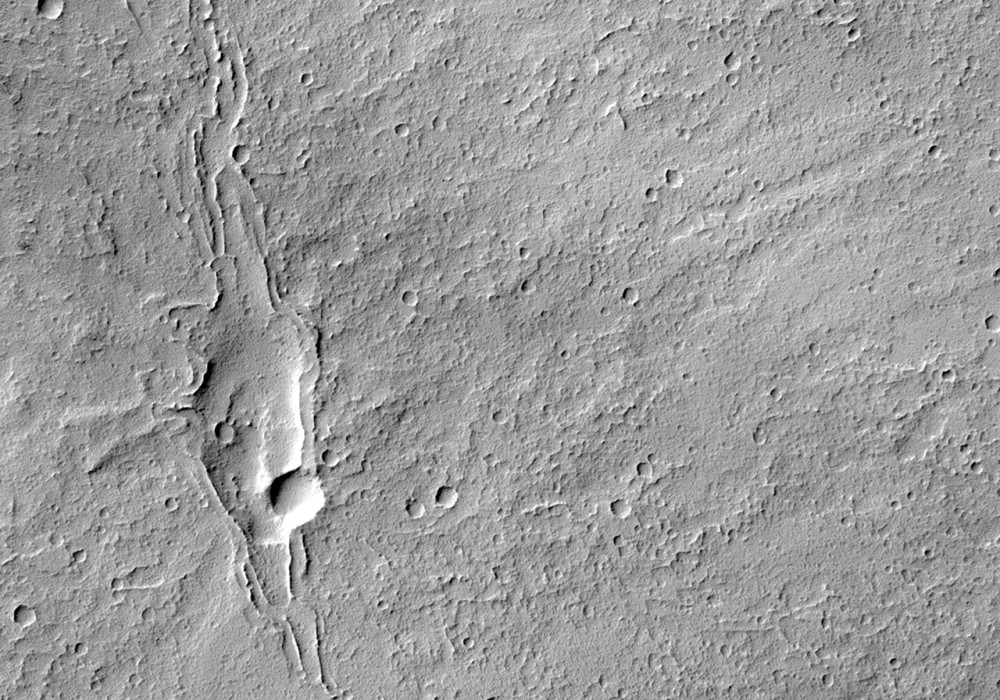This image is centered on the vent area of a small shield volcano located within the summit caldera of Arsia Mons, the southernmost of the large three Tharsis Montes volcanoes.
Since the first details of the volcano were revealed by the Viking orbiters 30 years ago, the presence of a string of several small shield volcanoes across the floor of the caldera has been known. The resolution of the Viking images was insufficient to show more than the mere presence of small shield volcanoes and the fact that they appeared to line up along a linear trend across the floor. And, it was suspected that the small shield volcanoes were the source of the lava flows that appeared to cover the floor of the caldera, but details have been elusive.
This HiRISE image of the central small shield volcano on the caldera floor shows that there are numerous lava flows radiating from a small summit crater. To the north and south, the lavas have accumulated in lobes, some of which radiate smaller channels and lobes. About midway from the crater, to both the top and bottom of the image, the surface appears very smooth and there are few details visible. Until detailed geologic mapping is done, it is difficult to conclude whether these smooth areas represent distal ponding of lavas that erupted from the summit crater of the small shield volcano, lava flows that have invaded from outside the image area at a time later than the formation of the small shield volcano, or later deposits of dust and ash that have simply covered the surface.
Whatever the relationships, it is clear that the floor of the largest caldera on Mars is far from a bland surface of old lava flows. Numerous flows and multiple vents have all interacted to create a complex series of surfaces that record the geologic development of the caldera floor.
Written by: L. Crumpler (27 July 2008)
More info and image formats at http://hirise.lpl.arizona.edu/PSP_008842_1705
Image: NASA/JPL/University of Arizona
